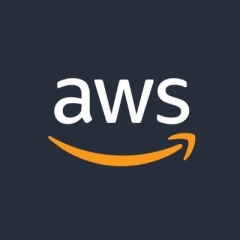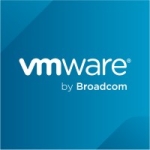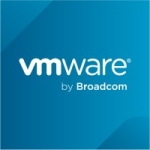What is our primary use case?
We use CloudFormation for infrastructure management. Since we only have read access to the AWS console, we rely on CloudFormation for any changes, such as creating or managing instances, storage, or IAM activities.
As a DevOps engineer, I work with databases, compute services (like EC2), the Beanstalk stack, and Lambda functions. CloudFormation is our primary way to manage all those resources.
How has it helped my organization?
There is a service called OpenSearch, previously known as Elasticsearch. It is used for search optimization. Whatever keywords we type in the search, related keywords automatically appear. This is facilitated by Elasticsearch, or in AWS terms, AWS OpenSearch.
Previously, it had a public IP address, but we needed to change that to a more secure setup. So, instead of modifying the current public VPC, we decided to go with a totally new one, and we are currently planning to migrate from Elasticsearch to OpenSearch.
Elasticsearch is open-source, which anyone can use, not just AWS cloud users. AWS OpenSearch is something AWS offers, which is like an extension of Elasticsearch.
This is our plan for upgrading. So we created a VPC, which should be private, with the proper setup to enable communication between computing services across different accounts as well. We use different accounts to manage our applications.
Even if one computing service is on one phone and another on a different phone, both should be able to communicate with each other. Also, we have many legacy applications available, which are very old and installed directly on an instance, not as a microservice. These applications, on-premise, need to communicate with cloud servers. We use VPNs for this. Everything requires some planning to make this happen. This is something we have knowledge in and what we do in our work.
Even in DevOps work, deploying the application end-to-end without any manual intervention is key. Once a developer has pushed it to Bitbucket, which is the version control tool we use, if they click the build button in Jenkins, deployment should happen automatically and quickly, even in Jenkins AWS.
We recently decided to move to GitHub Actions, considering different options available to migrate our CI/CD setup to another one due to the manual processes here which are causing performance issues.
This migration IT is also happening, and this is something I have experience on.
What is most valuable?
One feature I like is reusing the same code. For instance, we have different environments available, like a general development environment, SIT, UAT. Once we have created a setup by spending much time on that particular code, we can reuse the same by changing minor details.
For example, if there is an application to be deployed in a development environment, I spend a lot of time to create a CloudFormation template with proper instance settings, and AWS JVM settings which need to be configured.
I configure everything at one time, and I can reuse the same multiple times if I want to create environments, which can be USIP pre-production or production. Reusing the code multiple times simplifies our work significantly.
What needs improvement?
For improvement, it's crucial that AWS provides options in terms of computing services, DB related services, and machine learning solutions. If I'm not hands-on with a particular service, like machine learning applications, I struggle to write the CloudFormation code. To specify, applications like SageMaker are ones I'm not very familiar with, so it takes me some time to launch ML-related applications when required.
Buyer's Guide
AWS CloudFormation
October 2025
Learn what your peers think about AWS CloudFormation. Get advice and tips from experienced pros sharing their opinions. Updated: October 2025.
872,778 professionals have used our research since 2012.
For how long have I used the solution?
We use it on a day-to-day basis in my company. I have been using it for four years.
What do I think about the stability of the solution?
I would rate the stability an eight out of ten.
Every day, we face issues like a headache-related task. We don’t use the software as a service model for Bitbucket; we maintain it in our infrastructure.
We previously used our NFS as the backend instance to store all the Bitbucket storage. Now, we recently upgraded to EFS.
Still, the performance is below the minimum expectation, which is that whatever the migration we are doing, it should be equal to the old server performance or better. But unfortunately, here, it’s poor compared to the old server performance. It takes 10 to 12 seconds to open a single page. So, we are still working on fixing the issue.
Many reasons we are able to find out why this is the case with AWS. One is related to the credits that AWS will provide. Here, so many people are using this bucket. So, the credit limit should be increased. That is one point. We have not found the proper reason, but still, in reality, we face different issues, and this is one of them that happened to them.
What do I think about the scalability of the solution?
I would rate the scalability a nine out of ten. We use it every day. There are around 15 end users who use this solution to manage other users and teams, like the QA team and the dev team is there, by concluding all the users. So, in our database, around 50+ user software is managed by our team, which is asking people, and we only have access to CloudFormation.
How are customer service and support?
We have contacted the customer service and support team. We needed to move some items based on the technical deployment solution. This is something that we are unable to figure out while the deployment is ready.
Everything is good on the cloud side and the configuration side. We have scenarios where we need to speak to Amazon’s support team.
How would you rate customer service and support?
How was the initial setup?
The initial setup is very straightforward. It depends on the project's scope. Typically, a minimal setup can be scripted within five minutes if it involves basic resources.
However, a more complex or fully customized setup can take longer. However, the process is much simpler compared to other infrastructure as code tools because no installation is required. I use the Visual Studio Code editor, which is sufficient to write our code, and the automation services handle the rest efficiently.
What's my experience with pricing, setup cost, and licensing?
There's no cost for launching any template using CloudFormation. We only pay for the AWS resources we use. For example, if we launch an instance using CloudFormation, we pay only for the instance itself.
What other advice do I have?
If you need to launch an instance for a one-time test, and won't be repeating that process, it might be simpler to do it manually.
Writing the CloudFormation code and handling potential deployment issues could be more effort than it's worth for a single use. However, if it's a task you'll repeat, CloudFormation is a great choice.
Overall, I would rate the solution a nine out of ten. I would recommend using it.
Disclosure: My company does not have a business relationship with this vendor other than being a customer.
















